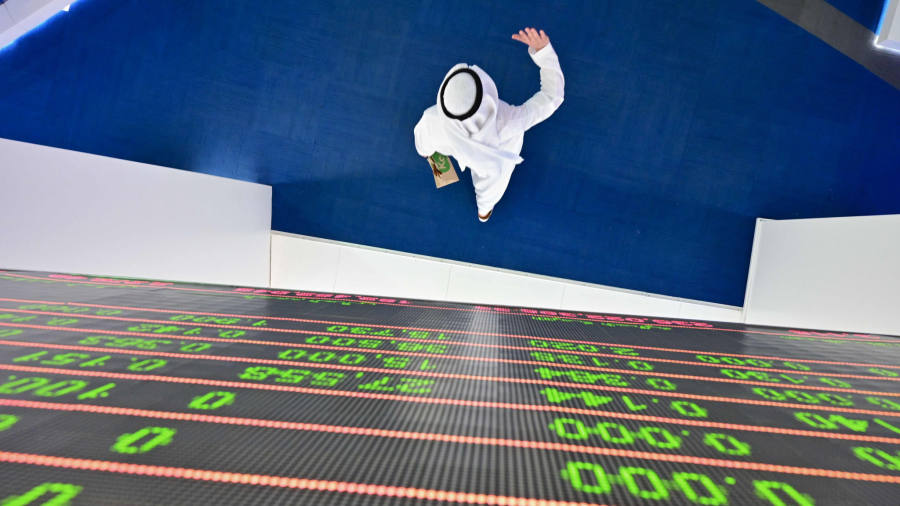
Saudi Arabia has launched an aggressive oil price war targeting its biggest rivals after Russia refused to join production cuts with Opec, in a move that threatens to swamp the crude market with supplies just as the coronavirus outbreak hits demand.
Saudi Arabia will raise production and offer its crude at deep discounts to win new customers next month, according to two people familiar with the country’s oil policy, which risks sending prices tumbling further. Oil prices had already dropped by a third since January to near $45 a barrel.
The kingdom plans to pump more than 10m barrels a day next month while announcing unprecedented discounts of almost 20 per cent in key markets, in an apparent attempt to punish Russia, while squeezing the US shale industry and other higher cost producers.
Production could eventually surpass 11m b/d, one of the people said, well above the roughly 9m the Riyadh had previously proposed lowering its output to.
Crown prince Mohammed bin Salman, the country’s de facto ruler, moved at the weekend to consolidate his position, arresting at least three members of the royal family that may have posed a threat to his accession to the throne.
The fall in oil prices risks new turmoil in the kingdom, as MBS’s plan to modernise the economy relies at least in part on higher energy revenues to fund the transformation.
Shares in Saudi Aramco, the state oil company, dropped almost 9 per cent on Sunday, falling below its December stock market listing price. The broader Saudi stock market sank more than 8 per cent.
Saudi Arabia had last week sought the support of Opec and allies outside the cartel, such as Russia, for a substantial cut in production to stabilise the oil market, which has been reeling as the spread of coronavirus hits the global economy and saps demand for crude.
But Russia torpedoed the plan, eyeing an opportunity to hit US shale producers, infuriating the kingdom and resulting in the countries removing all restrictions on their output from April.
“Opec and other countries including Russia couldn’t get an agreement. If others will push their production, why is Saudi Arabia not doing the same,” said a second person familiar with the kingdom’s output policy. “Now we have the right to sell more to compensate for any loss in prices.”
Russia has built up a $170bn national wealth fund from excess oil revenues in recent years and believes it can tap that to offset any short-term price war, despite crude plunging close to its budget break even price of around $42 a barrel.
Mikhail Leontiev, press secretary for Rosneft, Russia’s largest oil producer, said that the relationship with Saudi Arabia had become “meaningless”.
“The true result of the arrangement is that the total volume of oil that was reduced as a result of the repeated extension of the Opec+ agreement was completely and quickly replaced in the world market with American shale oil,” he said in a statement to state-owned news agency TASS.
Rosneft is majority owned by the Russian state and run by one of president Vladimir Putin’s closest and longest-serving associates.
“The proposal that was made was not a partnership. A partnership agreement always implies a compromise,” Mr Leontiev said, adding that the collapse of the agreement allows Russia to concentrate on monetising its crude resources.
The last price war in 2014 upended the global oil industry, inflicting pain on producers from the North Sea to North Dakota, and forcing them to adapt to the decisive end of the $100-oil era.
Higher output from Saudi Arabia would again hit the US shale sector, the rapid growth of which over the past decade has made the US the world’s top producer and forced rivals to restrict output in a bid to prop up the price.
The US shale industry has struggled to generate consistent profits, however, and is struggling with tighter access to financing, leaving it vulnerable.
But the kingdom appears to be targeting Russia in particular.
Saudi Arabia is set to announce that it will sell its crude into north west Europe, a key market for Russian barrels, at discounts to its reference price of more than $8 a barrel compared to March, according to an official price list seen by the Financial Times.
In the US it is also set to discount its crude by around $7 a barrel in April compared with March. It also made prices cuts to Asia of between $4-6 a barrel.
Monthly price adjustments are normally only a few cents or at most a dollar or two, leaving little doubt over what the kingdom is hoping to achieve.
Saudi Arabia’s 12m b/d production capacity has largely been restored after the drone and missile strikes on its key facilities in September.
The kingdom maintains the most spare production capacity globally, allowing it to raise its output faster than rivals.
The move will put pressure on Saudi Arabia’s allies in the Gulf like the UAE and Kuwait to cut their prices and potentially increase output to remain competitive.
A price war is likely to prove painful for all sides, but will hit the economies of weaker oil-dependent producers like Nigeria and Angola particularly hard, as they have little scope to increase output and less ability to borrow to plug budget shortfalls.
The price cuts threaten to further weigh on international oil prices, with Brent already down from $70 a barrel in early January to near $45 a barrel. It fell 9 per cent on Friday alone after the so-called Opec+ deal unravelled.
Traders and analysts have warned an all-out price war could see oil prices fall to $30 a barrel or lower, bringing back memories of the last time Saudi Arabia opened the taps in 2014.
https://news.google.com/__i/rss/rd/articles/CBMiP2h0dHBzOi8vd3d3LmZ0LmNvbS9jb250ZW50L2Q3MDBiNzFhLTYxMjItMTFlYS1iM2YzLWZlNDY4MGVhNjhiNdIBP2h0dHBzOi8vYW1wLmZ0LmNvbS9jb250ZW50L2Q3MDBiNzFhLTYxMjItMTFlYS1iM2YzLWZlNDY4MGVhNjhiNQ?oc=5
2020-03-08 11:53:22Z
52780639491845
Tidak ada komentar:
Posting Komentar